Turning my old PC into an HTPC (well, kind of anyway...)
By spazmaster666 7 Comments
So since I’ve recently built myself a new Sandy Bridge system, I figured I shouldn’t let my old components go to waste. I’ve always wanted to dabble into HTPCs but never wanted to use one as my primary system. Now that I have two computer available, it made sense for me to turn one into a dedicated multimedia machine. Now, this build isn’t a HTPC in the strictest sense since I’m not using a typical HTPC case or form factor. I don’t have an issue putting a mid tower close to my TV anyway so I figured it was a better idea to go for something that has decent airflow rather than a slim form factor. And considering I only had to buy two additional components for this build (case + power supply) I only ended up spending $120. Anyway, on to the components.
Chassis: Cooler Master HAF-912 (4x120mm fans, 1x200mm led fan, 1x140mm led fan) - $60
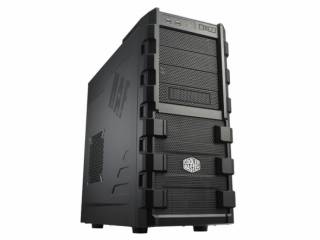
The choice of the HAF-912 may seem like an odd one but after looking through several HTPC cases (including those with built-in remotes and LCD screens, etc) the HAF-912 ended up being my case of choice because of its size (a mid-tower that doesn’t take up a whole lot of room yet is big enough to fit pretty much anything), and airflow. While an HTPC case may be more aesthetically pleasing and easier to move around, at the end of the day, I prefer flexibility over aesthetics.
CPU: Intel Core 2 Quad Q6600 (3.2GHz @ 1.325 vcore)
My old Q6600 was getting a little slow for the latest games but for multimedia playback, it’s still plenty powerful, not overly power hungry and runs relatively cool. I have it at a lower OC than I used to since I don’t really need the extra speed. I may even back it down to 3.0 GHz @ 1.275 vcore or even the default speed to lower the power consumption.
CPU Heatsink: Thermaltake Frio with dual 120mm fans
Though the Frio can get loud with the fans at high speeds, it's pretty quiet when they are running at low to medium speeds. For my Q6600, even with the fans on low, I'm getting very good temperatures (19 ° C idle, 45 ° C at full load)
Motherboard: ASUS P5Q Deluxe
It's kind of ironic that my much older P5Q Deluxe has some features that the P8P67 Pro in my Sandy Bridge system does not (including dedicated reset buttons on the motherboard and dual gigabit lan).
Memory: 8GB (4x2GB) Corsair XMS2 DDR2-800 (1068MHz @ 5-5-5-18)
Yeah I was one of those crazy guys who had 8GB of memory way back in 2007, but hey it has definitely served me over the years.
GPU: eVGA GTX 260

Not the most power efficient card to use for an HTPC, but the GTX 260 actually consumes very little power in 2D mode, supports CUDA for trans-coding/decoding, and more importantly can handle games if I ever feel the need to play games on this system (which is unlikely since I have a separate gaming rig)
Hard drive: 1 TB WD SATA II
A standard 7200RPM SATAII drive that I had used previously. It's still relatively unused so I opted not to buy a new hard drive since this machine will mainly be used for streaming.
Optical Drive: Samsung 20X DVD Burner
Decided not to buy a BluRay drive since if I wanted to watch BluRays I usually use my PS3. If I really wanted to run Blu-ray on this system, I'll probably just yank the BluRay burner from my primary PC and stick it into this one.
Other Components
Startech 2-Port USB 3.0 PCI-E X1 Card
In case I ever decide to plug in USB 3.0 hard drives into this system.
PSU: Antec BP550 Plus 550W Modular ($60)
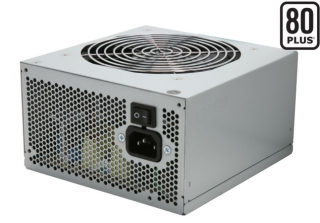
A cheap, yet well built power supply which has plenty of juice for the components that I'm running. it even has 80+ rating meaning it should be relatively efficient.
Tuner: Avermedia AverTV Hybrid Volar Max USB 2.0
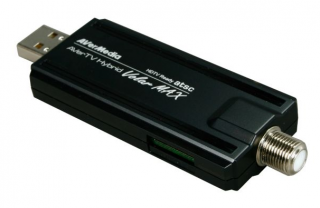
My old HDTV tuner still works great and gives good result from both over the air and QAM (cable) signals. It also has DVR capabilities which is useful at times. As for DVR software, I found that Windows Media Center has a great built in TV/DVR feature that's much easier to use than the media suite that Avermedia provides.
Audio: Integrated HD audio
Decided I didn't really need a dedicated sound card. The HD audio should be fine since I'll be outputting everything to my receiver anyway.
Receiver: Pioneer VSX-820K 5.1 (via optical out)

Got this on sale last year for $180 at Best Buy. This is a pretty good A/V that supports HDMI passthrough, 3D, and all the HD audio formats. I'll be running Optical/Toslink to it right now but I will probably use HDMI out if I decide to replace the graphics card. For most intents and purposes, outputting in optical is just fine since most of the content I'll be watching are encoded either in MP3 or Dolby Digital/DTS so I'm not really missing out by not having HDMI (anything that is not encoded in AC3/DTS will be encoded into 640kbps AC3 via ffdshow.) Obviously some quality loss is expected when rencoding non-DTS or AC3 formats into AC3 but I'm not that picky.
Speakers: 4 x Insignia 6.5” Bass Reflex Bookshelf Speakers; 1 x Pioneer SP-C21 5.25” Center Speaker; BIC V1020 10” Down-Firing Subwoofer
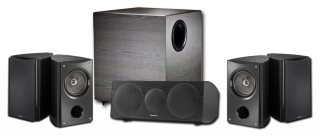
I put together this 5.1 setup last year for around $400 and I've been pretty satisfied with it. It definitely outperforms the various HTIB out there and while bookshelfs definitely take up more space, the much improved frequency response vs satellite speakers is definitely a big bonus. In most cases I don't even need to turn my subwoofer on (at 160W RMS and 350W Peak, the BIC V1020 is probably overkill for my relatively small living room).
So it didn't take me too long to put everything together. The HAF-912, despite being a budget midtower case, has a surprisingly amount of room as I fit everything including the huge Thermaltake Frio heatsink without any clearance issues. Cable management was a breeze as well, though it did end up being a little messier than my other system.
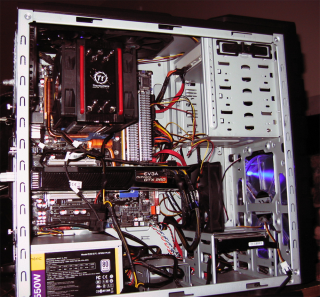
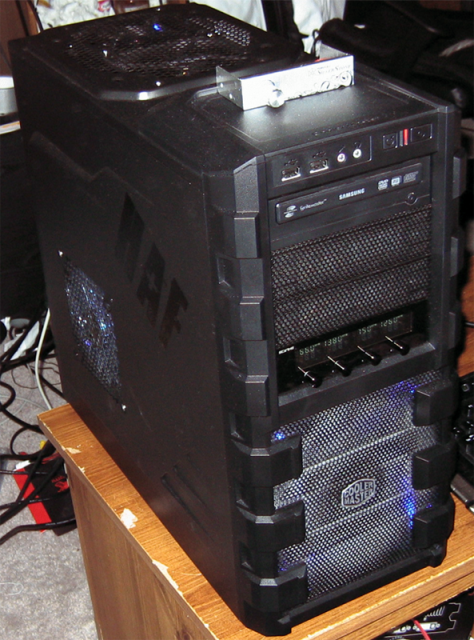
Using my Scythe 4-channel fan controller to turn most of the fans to low speed makes the case pretty quiet while still maintaining good airflow (as the case as an enormous number of fan slots for a case in the $60 price range). Though adding a 200mm LED fan, two additional 120mm fans, and a 140mm LED fan did add another $50 to the price (not calculated since I already owned the fans in question) but I probably didn't need to fill out all the fan slots considering what I'm using this PC for. But hey, I had a bunch of left over fans from my previous case (a Thermaltake Armor) so might as well put them to good use.
Overall, I'm pretty happy with this build though there are few components that I may get in the future to make it more of an HTPC including a multifunction remote (I'm getting by just fine right now with a wireless keyboard and mouse) or a graphics card with HDMI audio output. For now though, this PC definitely does what I want it to and it's always nice to make good use of old components.